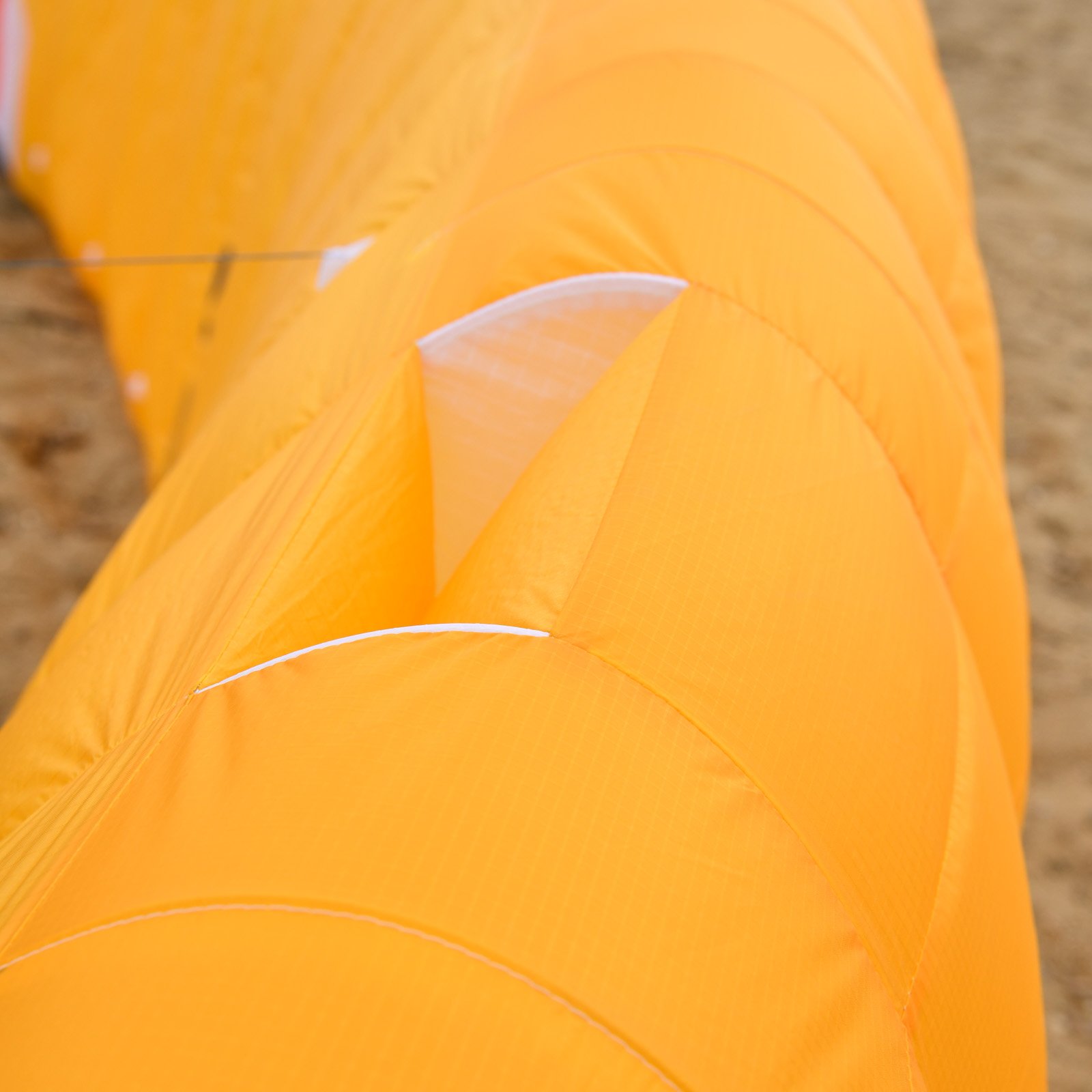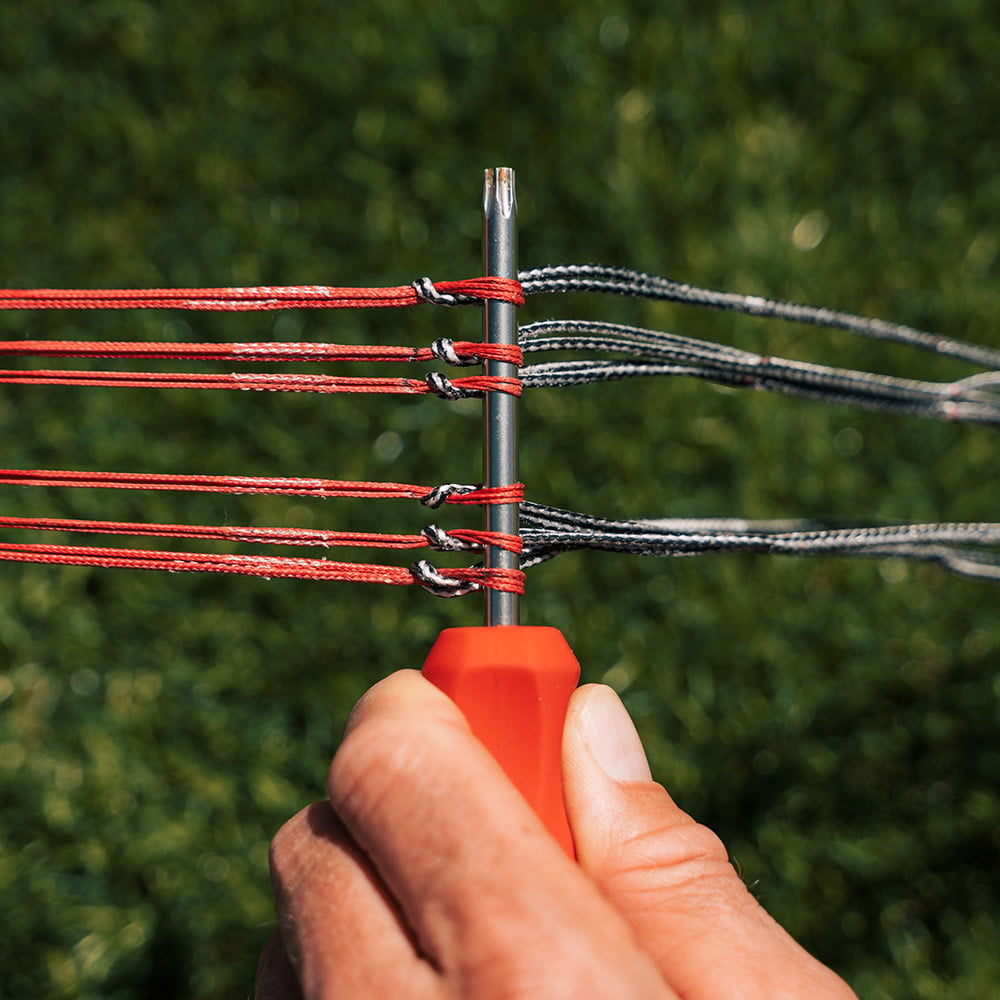Notas importantes:
• El R1 V4 es solo para riders avanzados que tienen experiencia previa en cometas de foil. No es difícil volar, pero hay técnicas necesarias para volar una cometa foil de alta relación de aspecto.
Ver Manual de R1V4
• Los materiales de la R1 V4 se llevan empleando extensamente en nuestras cometas y parapentes ultraligeros desde 2011. La cometa debe cuidarse con esmero y necesita un rider con experiencia que sepa cómo mantenerla en el aire y cómo manejarla con suavidad en el suelo.
• Se puede volver a despegar desde el agua, pero recomendamos que la mantengas volando y fuera del agua ¡siempre que sea posible! Un sistema de drenaje en las puntas de ala permite que salga el agua que pueda haber entrado en la cometa. No uses esta cometa en olas.
• Siempre que vueles una cometa foil, usa un asa de freno. Es el asa/línea que se extiende entre las líneas guía traseras de la barra. Este asa, fácil de agarrar, hace más sencillo el inflado, el aterrizaje automático y el despegue de espaldas.
• Esta cometa cuenta con una sencilla, pero eficaz suelta para dejarla desventada. Tras soltar la línea de desventado, antes de volver a despegar la cometa deberás comprobar que no se hayan entwistado el acelerador ni las bridas y las líneas de vuelo.
• Al guardar la R1 V4 hay que plegarla cajón por cajón. Si la cometa se pliega y se guarda usando cualquier otro método, como por ejemplo enrollándola, la garantía quedará anulada. Las varillas de plástico del borde de ataque son parte fundamental del diseño y no deben deformarse, pues de lo contrario la cometa puede perder estabilidad y características de vuelo.
Vídeo sobre cómo plegar y guardar la R1 V4
• El acelerador y las líneas requerirán mantenimiento al igual que cualquier material de altas prestaciones en deportes de competición – deben revisarse tras cada 60 horas de vuelo y mantenerse con el ajuste correcto, o la cometa no funcionará como fue diseñada. Las líneas que estén desgastadas o se salgan de las tolerancias de fábrica (+/- 15 mm), deberán ser sustituidas. Las líneas del acelerador que estén desgastadas, deberán ser sustituidas. Si las líneas del acelerador no están desgastadas, pero no están dentro de las especificaciones de fábrica, deberás ajustarlas para dejarlas a la medida correcta. Aquí puedes ver vídeos sobre cómo comprobar las líneas, así como un PDF explicativo…
Ver Speed System & Bridle check pdf

 Español
Español














































































